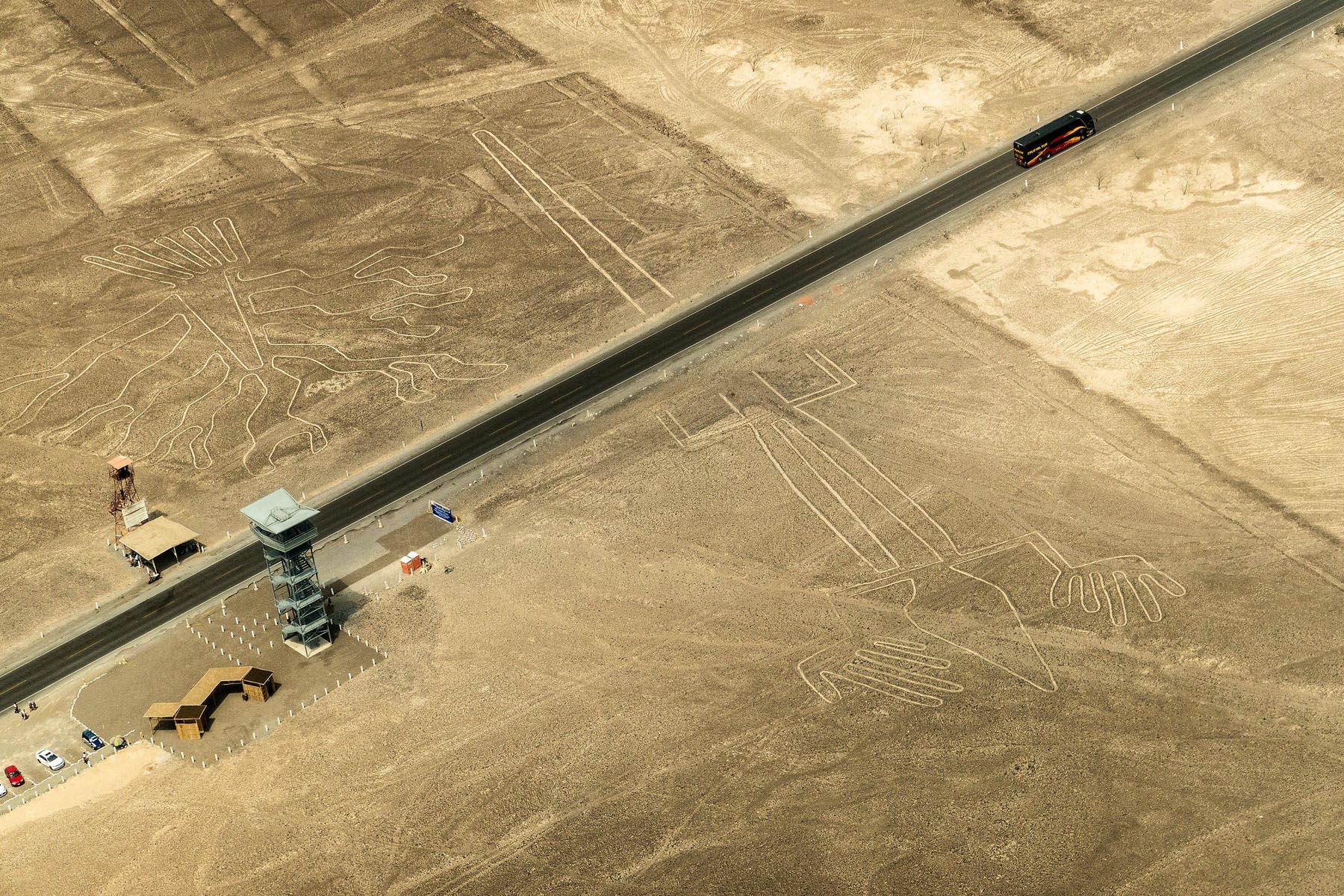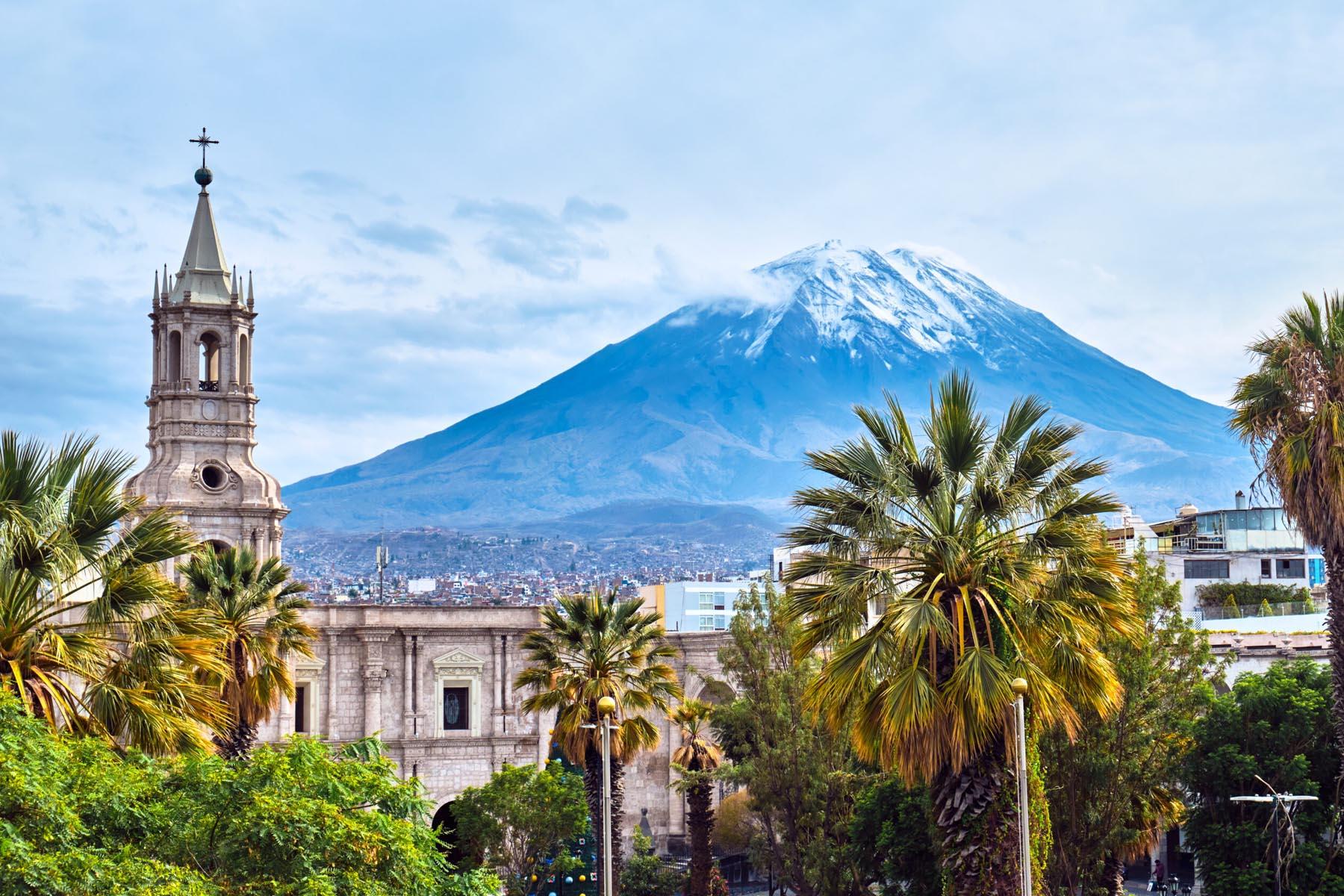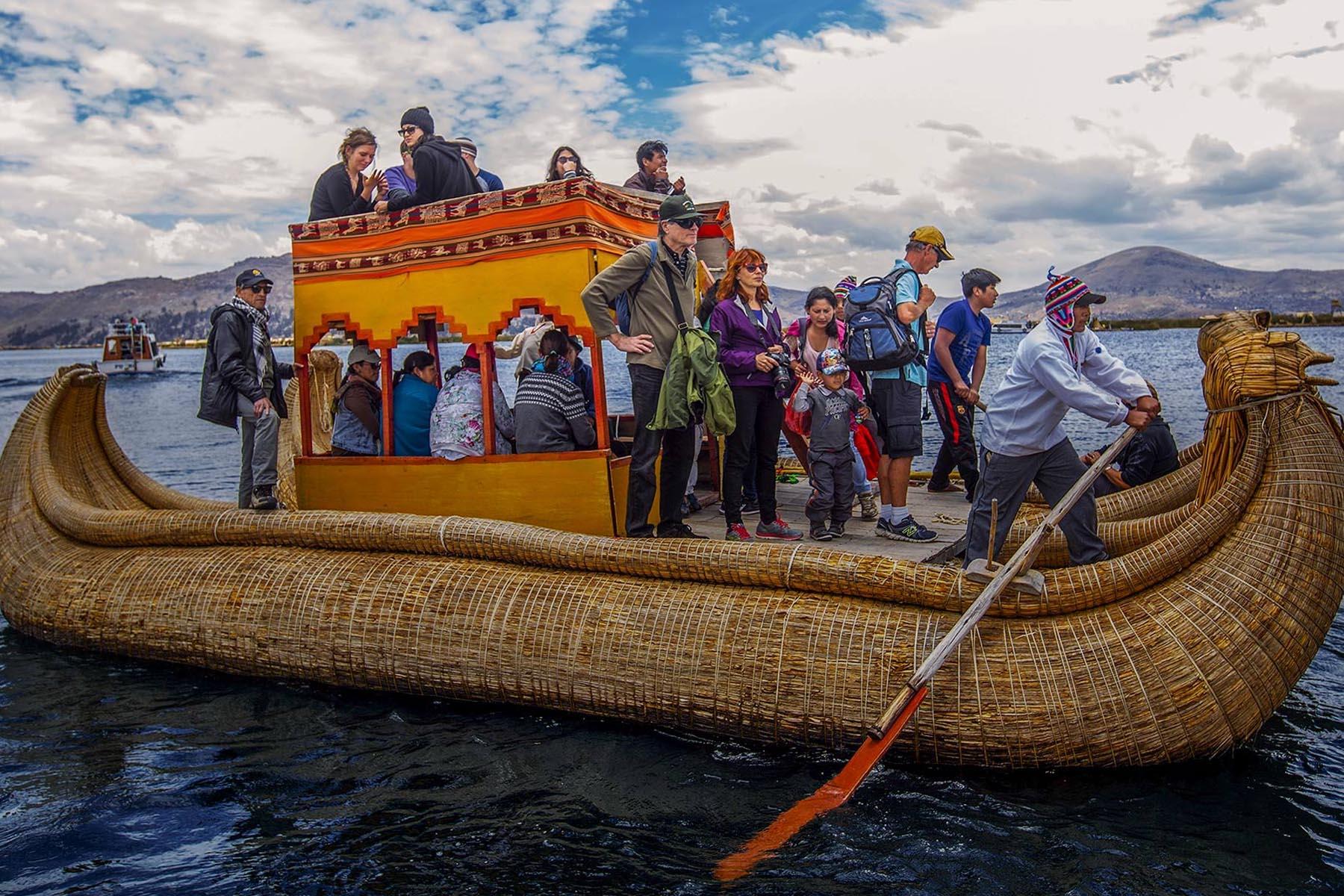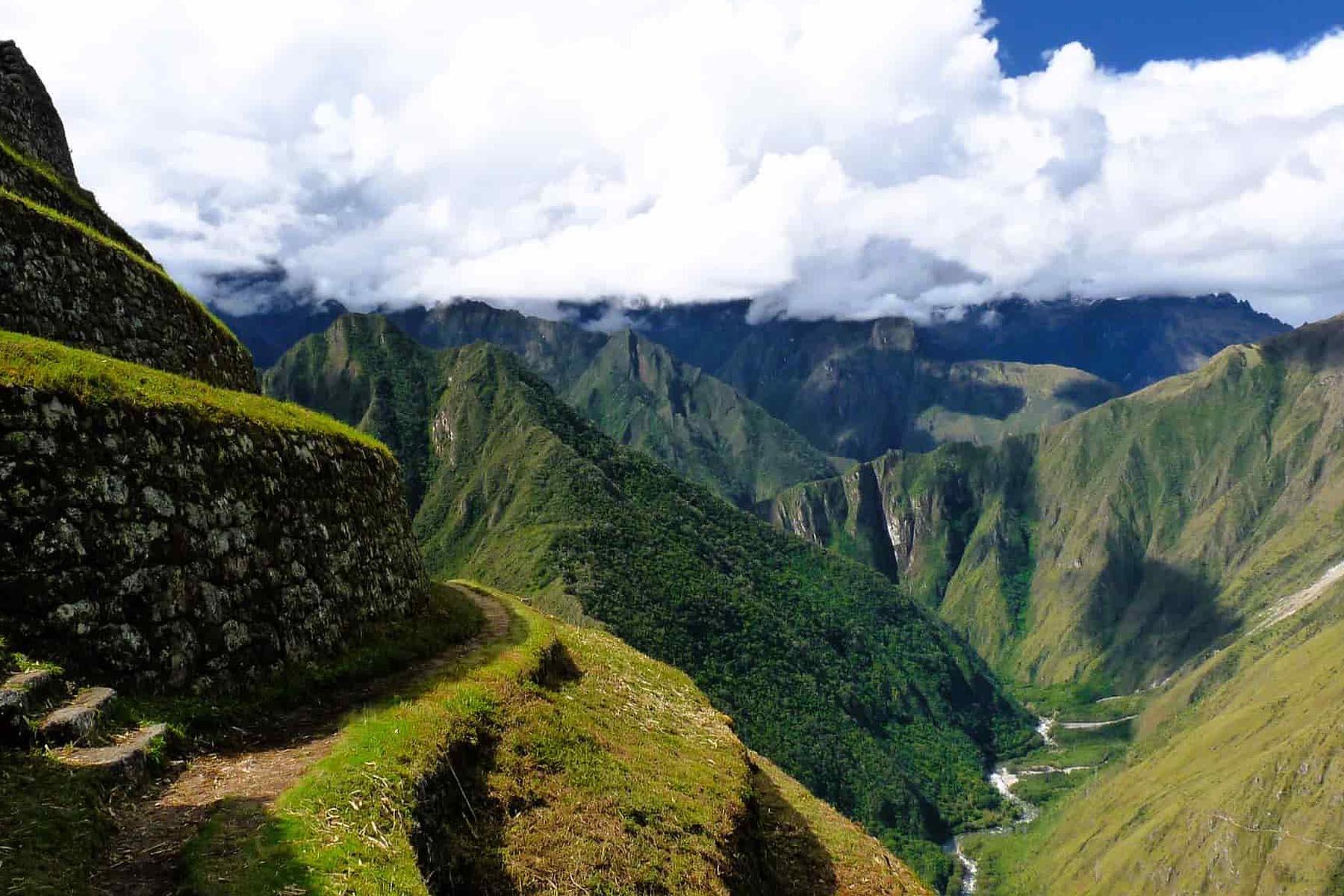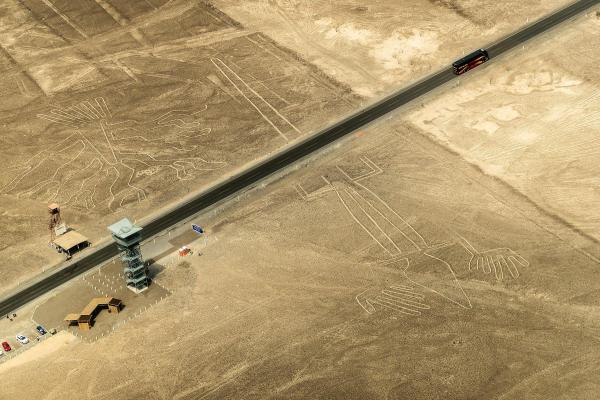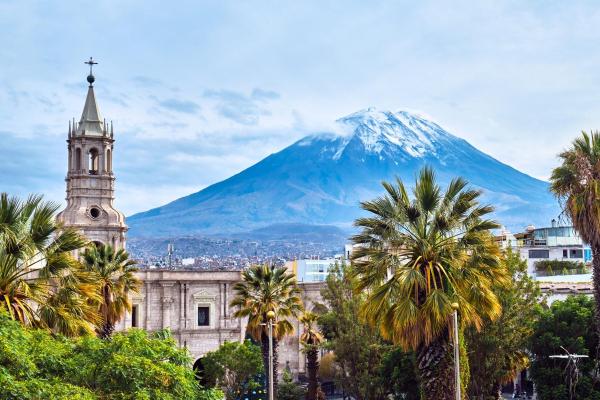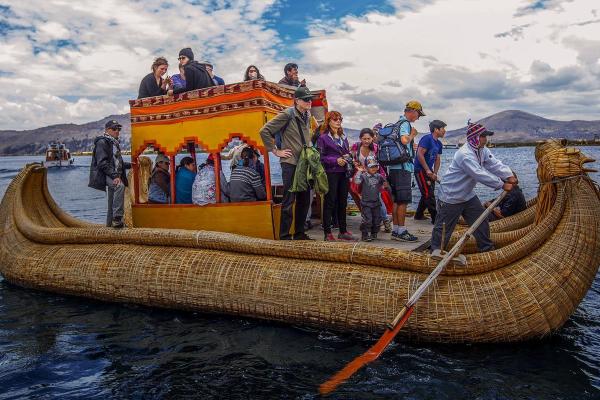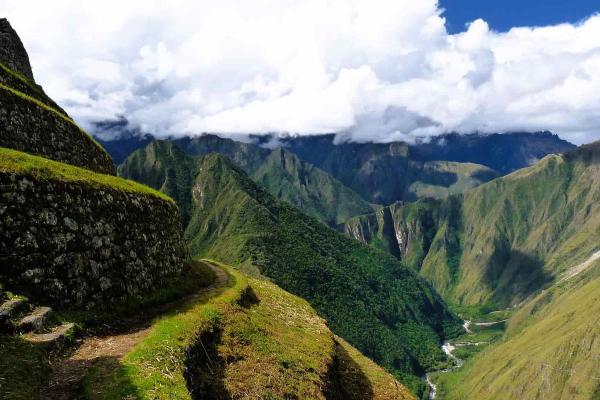Classic Peru
$2800.00/From
Ancient Peru tour comprises of journeying to the best places of Peru on this excellent value peru travel package. Discover the real Peru on this 3 week journey through this ancient country full of mystical cultures. This is a marvellous tour where nature displays her changeable and erratic micro-weather. During the next three weeks we will have an exceptional excursion through the most appealing regions of Peru, and will have the privilege to unearth the ancient cultures, Incas and pre-Incas and get in contact with the different Andean cultures.
Itinerary of Ancient Peru tour
- Day 1: Arrive to Lima
- Day 2: Local bus to Paracas city
- Day 3: Boat to Ballestas Islands, in the afternoon bus to Nazca
- Day 4: Overflight to the Nazca Lines, drive to Arequipa
- Day 5: Arequipa Sightseeing
- Day 6-7: Tour to Colca Canyon
- Day 8: Public bus to Puno.
- Day 9-10: Lake Titicaca tour.
- Day 11: Local bus to the imperial city of the incas, Cusco
- Day 12: Guided tour to the Sacred Valley of the incas
- Day 13-15: Hiking to Inca Trail
- Day 16: Continue the walk, arrival to Machu Picchu
- Day 17: Relaxing day
- Day 18-19: Fly to Puerto Maldonado, Guided tours around the Amazon jungle.
- Day 20: Flight back to the capital city, Lima, to enjoy our last night with the group.
- Day 21: Departure
What is included in this trip?
- Airport arrival and departure transfer
- Accommodation: Hotel 3 star (13 nights), Homestay (01 nights), Camping (03 nights), Lodge (02 nights), Night Bus (01 night)
- All entrance fee according to itinerary.
- Local guide throughout as per itinerary.
- Meals: 20 breakfast, 07 lunches, 06 dinners and 03 afternoon hot drinks.
- Porter to carry food, tents, cooking staff and your personal belonging on the Inca Trail.
- One cook for the Inca Trail.
- Camping equipment: Double tent, sleeping roll mat.
- Communal dinner tent, cooking tent, toilet tent on the Inca Trail
- All eating and cooking stuff, stools and tables on the Inca Trail
- Sleeping bag (-5 grades)
- Domestic flight (CUZ - PEM - LIM)
- Plane on Nazca Lines
- All land transport along the route
- Tourist bus down to Machupicchu town.
- Tourist train round trip to Machupicchu
- Boat on Paracas Island, Lake Titicaca and Amazon Jungle.
Not included in this trip:
- Pre & post tour accommodation
- International flight and departure taxes
- Travel InsuranceMeals not detailed
- Tips, baggage portage and other extras not specified.
Meals budget: Allow USD250-300 for meals not included
Tour Plan
Day 1: Lima
Arrival to the city of Lima, transfer to the hotel. There are no planned activities, so you can have the rest of day free.
Day 2: Paracas
Transfer to the bus station to take a local bus to the city of Paracas. Once we arrive there, there are optional activities available such as Paraca’s reserve, museums or you can just explore the city
Day 3: Balletas Islands
Transfer to the pier of Paracas, to take the hovercraft. It will take us around the bay of Paracas, the port of San Martin and the foothill of the baffling “Candelabro” hill (giant figure in the sand). We continue the tour to the Ballestas Islands, one of the most charming sceneries of the Peruvian coast. There one can enjoy the guano birds (birds that produce manure) and sea lion colonies in their natural habitat. In the afternoon a bus takes us from Pisco to the city of Nasca. Transfer to hotel.
Day 4: Nazca Lines
After breakfast we take a flight over the Nasca Lines.
More than 2000 years ago, an advanced pre Inca culture left us one of the biggest mysteries of our times: giant figures traced in the desert that can only be appreciated from a plane and form what some experts call “the biggest calendar of the world”, even though nobody really know their exact meaning. Our tour starts at the airport, where we board a light aircraft that will take us over the enigmatic Nasca Lines. The flight lasts around 45minutes.After this amazing tour we take an overnight bus to Arequipa.
Day 5: Arequipa
Arequipa is the second biggest city in Peru, located in the south of the country, and under the shadow of the famous volcano, “El Misti”. This amiable Peruvian city lies at an altitude of2300m and with an average temperature of 20-25C and sunshine all year round, its a beautiful place to spend a couple of days adjusting to the altitude.
On arrival you are picked up and trasferred to your hotel.
You have free time for the rest of the day. The Plaza de Armas is clearly one of the most charming public squares in Peru. The city is full of charming Spanish colonial buildings and churches, but the principle allure is the Santa Catalina monastery. Arequipa is encircled by several volcanoes and has a great laid-back atmosphere. The best way to get around the city is by taxi. They are cheap so you could venture out of the city to visit the surrounding areas.
You could also head to the Santa Cantalina monastery, which is definitely worth a visit. Stepping through the gateway is like stepping through another world. Unseen behind the walls lies a maze of narrow winding alleyways between high red and blue painted walls. There are small isolated courtyards adorned with flowerpots and jugs, prayer rooms, stairways leading nowhere, beautiful flower gardens lovingly tended by the nuns who live there. It's a bewitching place, especially in the late afternoon when the sun is setting, the colours are emphasized and there are hardly any tourists.
Day 6: Colca Canyon
You will be picked up early for the 5 hour ride across the altiplano to Chivay. Along the way we stop at the Aguada Blanca National Reserve where we see the cute South American cameloids like the alpaca, the llama, vicuñas, guanacos, etc. You can have a little nap until the bus starts to wind up the mountains and the expanse opens up to boundless vistas. The last stretch into Chivay follows a bending road through the Colca Valley.
Early afternoon you will arrive at Chivay.
The Colca Valley is over 100km long and deeper than its renown equivalent, the Grand Canyon. It wasn't the Incas but the Colluhuas, a culture that dates back another 1000 years that built the steep cliff faces into the stepped terraces for use as farmland. Its amazing how these terraces could have been made by human hands.
As you drive through the valley you will be overwhelmed by the amount of breathtaking views. On the way we will see how they produce the Tuna (prickly pear) and the Cochinilla which is a worm that in Inca times was used to dye fabrics and also the famous Cactus and its fruit called “Muske”. During our walk we can also see the imposing snow capped mountains and the life style of the real andean communities, their culture, clothing and how they really live in the high lands.
Once we get at Chivay, a small town in the Colca’s valley, we arrive at our hotel with plenty of time to go to the hot springs to relax or go for a meander around the area.
The hot springs here are a great indulgence. Theres nothing better way to sooth your muscles at the end of a long tiring day, as you listen to the sounds of the Colca river and stare at the huge cliff faces and the clear starry sky above you..
Day 7: Colca Canyon
After an early breakfast on day 7 we continue our tour in the valley, making stops at the local villages of Cabanaconde and Yanque with their colonial churches, nearby pre Incan tombs placed in mountain walls, following the road along the bottom of the canyon to the Cruz del Condor viewpoint.
Cruz del Condor is the only place in Peru where you can see the condors up close. In the morning as the sun begins to heat up the air the condors love to swoop up on these balmy thermal currents and if you keep still they will glide right over your head!
After we are transferred to Puno, where you will arrive in the late afternoon. You will be accommodated at your hotel upon arrival.
Day 8: Lake Titicaca excursion
In the morning of day 8 our limousine will pick us up at the hotel, for the short drive to the port of Puno, where we board the boat and sail out on to the expansive, open lake. The boat goes rather fast so the wind will make you feel cold though it appears nice and sunny, so gloves and hats will come in handy. On accord to the local story, Lake Titicaca was the area of the lost city of Atlantis, the birthplace of our civilization. As you glide accross the lake and observe the mountains and the sky you can understand why.
An hour later we make our first stop at the floating reed islands of Uros. The islands are very well known with tourists, though due to the place and position of the islands they have been able to cultivate their unique atmosphere and customs. As you step on to the reeds, you'll observe the elasticity under your feet. It's an odd sensation walking across the floating floor of the island. A native family will show you around and reveal how the islands were built and tell you about their way of life.
Next the boat will set off to Amantani Island, where our tour guide will show us around the island with its stunning Lake Titicaca views and friendly inhabitants. We overnight in a family house to experience a bit more of the local culture and share the traditions of the local people.
Day 9: Lake Titicaca tour
The following day, after breakfast, we continue our motorboat ride to Taquile Island. On Taquile its a rather long climb up to the village square, so a quick snack beforehand is advisable.
The original individuality of the island has been kept up as much as possible and it's not allowed to construct hotels on the island. Tourism appears to not have had much effect on the Taquilans with their unique characteristics and native clothes and it doesn't seem to have affected their life-style and in spite of the many foreigners they are amazingly affable and approachable.
While probing the island you will notice that its mostly men hanging about in the village square in white blouses with a coloured sash, knitting wooly hats. The shape and colour of the hats reveal what is their marital status, which makes things a bit easier!
In the afternoon you'll make your way down the long flight of steps once again to board the boat back to Puno, around three hours of sailing. Once there you are transferred from the port to your hotel
Day 10: Puno - Cusco
After a good nights sleep and an ample breakfast, we take a tourist bus which will stop at all the imprtant sites on the Puno-Cusco route.
Our first stop is in the village of Pucara where we visit the Lithic Museum exhibiting artefacts of a pre-Incan culture.
Then we continue to La Raya representing the border between the Puno and Cusco regions. This place is popular for its viewpoint offering luxurious vistas of the surrounding Andes.
After that we continue to Raqchi where we observe the Temple of Wiracocha (Incan god - creator).
Later on we get to the Southern Valley (also called the Sun Route), where we stop in the old pre-Incan village of Piqillacta which was constructed during the climax of the Wari culture (500-900 AD), this big urban and ceremonial center of about 2 square kilometers of extension stands as a huge set of stone and clay structures concentrated on a hill overlooking the magnificent Lucre lagoon. This was one of the most powerful regional centers of the Wari culture, seated in Ayacucho, which was occupied through the Incas through the years. Piquillacta or City of Fleas is today a national archaeological park with landscapes of great interest. It is located in the county of Quispicanchis, towards the east of Qosqo city, about 32 kms (20 miles) away by the present day paved road leading to Puno and Arequipa.of and covers an area of 8453 acres.
Piqillacta is a made up Quechua word, meaning lousy town (piki: fleas, llaqta: town) and is possibly the most important pre-Inca city in the district and its name adopted from the prescence of many enclosures of only 4 square meters, which apparantly were part of a military garrison. The original name is not known and it has been called "Pikillaqta" since the last years of the colonial period or the beginning of the republic, though when referring to this district or the lagoon many reporters call it "Muyuna" (curve or turn), "Muyna" or "Mohina"
Some investigators supposed that Pikillacta turned into a city of “mitimaes” during Incan times ("Mitimae" comes from the Quechuan word "mitma" meaning "resettlement". So mitimaes were originally groups of families taken by Incas from their native place to loyal or conquered towns to perform political, cultural, social, and economic functions.).
Our last stop is in the village of Andahuaylillas where we visit the famous San Pedro Church also called the "Sixtine Chapel of Americas". Here we can observe the quality of its works of art! The church was constructed by Jesuits in the edge of the 16th and the 17th centuries. Its architectural structure is typical of small town churches while its wide walls are characteristic of colonial buildings. It is made of adobe and its facade is decorated with white painting. Two stoned columns are projected towards its main entrance. Although its architecture is relatively modest its interior is richly adorned with amazing wall paintings!
Finally we reach the city of Cusco where we accommodate ourselves in a hotel.
Day 11: Cusco
The heart of Cusco is the Plaza de Armas, seemingly one of the most attractive squares in Peru. The streets around are lined with interesting shops and restaurants, the typical Latino pan pipe players. Cusco was the capital of the Incan empire (Tawantinsuyo = the Country of the Four Cardinal Points) that served as a base to Inca´s expansion into new territories. When Spaniards came, they destroyed Incan monuments and changed Cusco into a new colonial city. This gorgeous colonial city offers nearby Incan ruins, cobble-stoned streets, museums, churches and a lively atmosphere.
The city has got several very good museums such as Inca Museum, Qoricancha Museum, Archaeological Museum (which also houses a small art exhibition), Regional Historic Museum and Religious Art Museum.
Apart from the museums, churches and cathedrals, Cusco offers some of the most well preserved Inca walls in calle Loreto and calle Hatun Rumiyoc. Today is a day off for your own activities or a rest. Some of the optional activities we can offer you are a Cusco City Tour (starting after lunch), horseback riding around nearby archaeological sites (Sacsayhuaman, Qenqo, Tambo Machay and Puca Pucara), mountain biking to Maras-Moray-Salineras (Incan and pre-Incan sites) or white river rafting on Urubamba River
Day 12: Sacred Valley
Today our Tour Guide takes us into the Sacred Valley of the Incas that was an important food source for the Incas. The Sacred Valley is a lush agricultural region that continuously supplies Cusco with lots of its production. We visit the majestic ruins of Pisaq as well as its current famous handicraft market. Then we stop in Urubamba, considered to be the capital of the valley to have a buffet lunch offering Andean cuisine (not included in the tour). Afterwards, we continue to the picturesque town of Ollantaytambo with its Incan fortress before getting ready for our following hike, one of the highlights of the tour!
Ollantaytambo is your first taste of what lies ahead on the Inca Trail. The town and fortress of Ollantaytambo are strategically situated overlooking the beautiful Urubamba River Valley. We spend the night in this small town before heading to the starting point of the hike the next morning!
Day 14: Chaquicocha
This is the hardest part of our trip, with a steep climb to reach the first pass called Warmiwañusca (dead woman pass) located at 4200 mt o.s.l, after celebrating, we descend to Pacasmayo siuated at 3600mt o.s.l where we have lunch. We will then visit the archaeological site of Runkuraqay and the Inca fortress of Sayacmarca. We camp in Chaquicocha where we will enjoy a well deserved dinner.
Day 15: Wiñayhuayna
We start our day with a light climb to then descend to the town of Puyupatamarka, another archaeological site where we take a rest. Then we continue until we get to thearchaeological site of Wiñay Huayna (always young), lunch and a visited guide. Dinner and we spend the night in the campsite.
Day 16: Machu Picchu
We climb to Inti Punku also called “The door to the Sun”, after a magical sunrise, we descend to the most important archaeological site of all the trip, Machu Picchu. Here we have a guided tour of 2 hrs and then you can climb the mountain to Waynapicchu on your own, this will take you about 2 hrs then we descend to the town of Aguas Calientes to take the train back to Cusco.
Day 17: Cusco
Today is a free day, for relax, take a massage, explore the city, take some optional tours such as horse riding, rafting, visit the ruins that surrounds the city, its museums and churchs, go for shopping to the local markets and buy souvenirs, or just find a place in a bar around teh main square and get a good local coffee.
Day 18-19: Jungle lodge Peruvian amazon
Early in the morning we leave to the airport, to take the flight to Puerto Maldonado. Transfer to the port of the Tambopata river, where a motor boat will take us to the lodge in the jungle. Here we will enjoy a guided tour to appreciate the abundant flora and fauna, will watch monkeys, aligators, capivaras(a big rodent), spiders, etc, wil take a boat trip in a hiden lake and try to fish piranas and if we are lucky, we can see the “Giant Otter River” in its natural habitat.
Day 20: Lima
Today , after breakfats, transfer to the airport of Puerto Maldonado to take a flight back to the capital city for a last farewell dinner with the group.
Day 21: Departure
Today departure day, but also a good time to check out our website at the tailor Made section to extend your holidays!
Included & Excluded
Details about services not included and details not included in our packages, if you have any questions please contact us.




